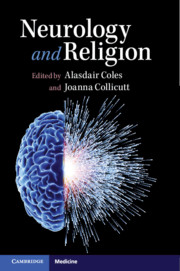Book contents
- Neurology and Religion
- Neurology and Religion
- Copyright page
- Contents
- Contributors
- Preface
- Part I The Neurological Study of Religion
- Part II Neurology and Religion
- II.I Clinical Conditions
- II.II Therapy
- II.III Death and the Brain
- Chapter 18 Examining the Continuum of Life to Determine Death
- Chapter 19 Near-Death and Out-of-Body Experiences
- Bibliography
- Index
- References
Chapter 19 - Near-Death and Out-of-Body Experiences
A Case for Dialogue between Scientist and Theologian?
from II.III - Death and the Brain
Published online by Cambridge University Press: 28 October 2019
- Neurology and Religion
- Neurology and Religion
- Copyright page
- Contents
- Contributors
- Preface
- Part I The Neurological Study of Religion
- Part II Neurology and Religion
- II.I Clinical Conditions
- II.II Therapy
- II.III Death and the Brain
- Chapter 18 Examining the Continuum of Life to Determine Death
- Chapter 19 Near-Death and Out-of-Body Experiences
- Bibliography
- Index
- References
Summary
The underlying philosophy of this new volume aims to facilitate – even expand – dialogue between clinically orientated scientists, theologians and philosophers over questions posed by neurological disorders in relation to emergent ‘spiritual/religious’ outcomes, real or artefact. This chapter specifically engages with Near-Death and Out-of-Body Experiences (ND/OBE), examining how these events might contribute to such dialogue.
- Type
- Chapter
- Information
- Neurology and Religion , pp. 230 - 253Publisher: Cambridge University PressPrint publication year: 2019



